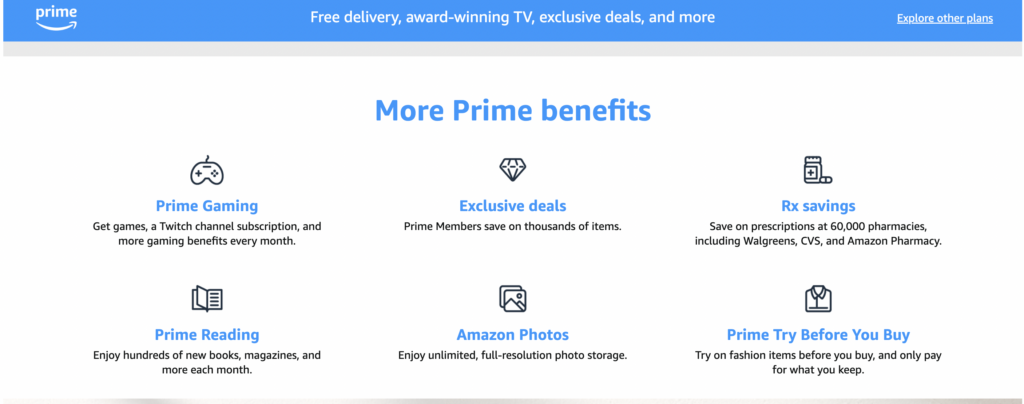Although the lines between subscription and membership often get blurry, they are two different things entirely.
Consider how gyms work.
When you get to a gym for the first time, they give you a form to fill out, after which they tell you to pay a stipulated amount for the month.
However, it’s a little different with Netflix. Instead of filling out a form, Netflix gives you a list of different tiered pricing and asks you to choose one before you proceed to make payment.
While the gym’s pricing model here is focused more on building a community network between gym members and the establishment, Netflix is simply transactional.
You don’t need to fill out any form that recognizes you as a member; the only hurdle required to access services or products offered is a paywall.

What is a Membership Model?
A membership model is a business strategy where customers pay a fee to access a set of products, services, or privileges, often defined by a sense of exclusivity or belonging to a community.
The idea here is to create a community or offer members exclusive perks. It’s about joining a group or club that offers ongoing value.
Amazon Prime is an excellent example of a membership pricing model, which is distinguished by:

Recurring payments: Members pay a monthly or yearly fee to use the service’s perks, giving Amazon a steady income stream.
Bundled offerings: Prime combines many services into one package, including free two-day shipping, streaming video and music, access to e-books and audiobooks, picture storage, special deals, and more for members only. This makes Prime more valuable than ever.
Strong value proposition: Prime’s benefits and ease of use make it an attractive deal that makes people want to stay a member.
Relationship mindset: Prime moves the focus from one-off purchases to long-term relationships with customers, which makes them more loyal and interested.
The effectiveness of the membership model is usually determined by a business’s ability to cultivate a deeper relationship with its customers that goes beyond transactional.
That way, businesses can enjoy a steady income stream, while customers benefit from a personalized experience that only improves with time.
MORE: B2B eCommerce sales in the US (2021-2027)
Pros of the Subscription Model
Predictable Revenue Stream
Recurring payments provide a stable revenue stream for business.
Scalability
It’s relatively easy to scale a subscription business. As your customer base grows, so does your revenue.
Consistent Engagement
Regular customer interaction provides opportunities for continuous engagement, feedback, and improvement of the service or product.
Lower Barrier to Entry
Subscriptions can offer a lower upfront cost than outright purchasing, making it easier for customers to access products or services.
MORE: What is competitive pricing?
Cons of the Subscription Model
Competition and Market Saturation
As subscription services become more popular, attracting and retaining customers can be challenging because the market can become saturated quickly.
Dependency on Long-term Customer Loyalty
Subscription model depends heavily on gaining customer loyalty, which can be challenging, especially, in a market where there are many alternate products and customers can easily switch to a competitor.
Continuous Innovation Is Necessary
You must constantly innovate and update your offerings to keep subscriptions appealing, which can be extremely costly.
MORE: What is everyday low pricing?
What Is a Subscription Business Model?
Subscription business model is more straightforward and transactional. Customers pay a monthly or annual subscription price to access a software product or service.
The subscription model works because it gives businesses a steady income stream and gives customers convenience and value.
Unsurprisingly, 70% of business leaders believe that subscription business models will be crucial to their future success.
A great example of the subscription pricing model is Adobe Creative Cloud. With this model, users pay a regular fee to receive a service or product instead of buying it all at once.
Key components of the Subscription model include;
Recurring revenue: Adobe receives regular income each month or year, creating financial stability and allowing investment in product development.
Flexibility: Users can select the plan that best meets their needs and budget, making it accessible to individuals and enterprises of all sizes.
Regular updates and innovation: The subscription model incentivizes Adobe to improve its product consistently and add new features, keeping consumers engaged and loyal.
Data insights: Subscription data gives excellent insights into user behavior and choices, which helps Adobe to personalize the user experience and adjust future offers.
MORE: Best Recurring Billing and Subscription Management Software
Pros of the Membership Model
Enhanced customer loyalty
Customers often feel like they belong and are part of a community when they use membership models. This emotional link can make people more loyal and help you retain customers for an extended period.
Brand Uniqueness
By offering unique membership benefits, your business can distinguish itself from competitors, appealing to customers looking for more than just a transactional relationship.
Community building
Memberships can help you build a community of users with similar interests. This community element can add significant value to your offering and serve as the vital ingredient that draws members in.
MORE: What is decoy pricing?
Cons of Membership
Risk of Losing Members
Like in the subscription model, there’s a high chance that members will cancel their memberships if they don’t get enough value. Providing consistent, unique value can be incredibly challenging in an already saturated market.
As a result, businesses with membership pricing models risk losing members, especially if their customers have high expectations for new products.
Cost of Acquiring New Members
A lot of advertising and promotion is usually needed to get new users. This can be money and time-consuming if you’re not the only one offering that service.
MORE: Geographical pricing
Difference Between Membership and Subscription Pricing Models
| Factor | Membership | Subscription |
|---|---|---|
| Fees | May involve a one-time or recurring fee. | Involves regular, recurring fees (monthly, yearly, etc.). |
| Benefits | Tailored to specific member interests and often includes community aspects. | Provides access to a broad range of products or services. |
| Engagement Style | Emphasizes building a community or exclusive network. | Focused on the product or service rather than community building. |
| Inclusivity | May have criteria for joining, creating an exclusive environment. | Generally open to anyone willing to pay the subscription fee. |
| Target Audience | Aimed at users seeking a sense of community or exclusive access. | Suited for users who prefer regular, ongoing use of a product or service. |
MORE: Freemium business model
Which Model Is Best for Your Business?
When starting a business and deciding whether to use a membership or subscription plan, you must ensure that the choice fits your business goals, the type of product or service you offer, and how you want to interact with customers.
If you want to create a sense of community and belonging among your customers or your company thrives on active user engagement and interaction, then the membership model is your best bet.
However, a subscription model may be more suitable if your primary goal is to create a regular income stream from your products or services.
The decision between membership and subscription models should be based on your business’s specific needs and goals.
Consider how you want to interact with your customers, the nature of your product or service, and the type of relationship you would like to foster.
Whether it’s the community and exclusivity of a membership model or the steady revenue and simplicity of a subscription model, the right choice can be the game-changer for your company’s success.
MORE: What is usage-based pricing?
Key Takeaways
Choosing between membership and subscription models for your SaaS product depends on your business goals, the nature of your product, and your target audience.
While memberships are great for building a community and giving members unique benefits that make them more loyal and interested, subscriptions give you a steady stream of income and regular customers who can use your services.
It is essential to understand the specific pros and cons of each model. The right choice will not only meet the needs of your business now but also be able to grow with it and adapt to changes in customer tastes as the digital world changes.
For more pricing information to help guide your business, visit our SaaS Pricing pages.
Related Posts
Frequently Asked Questions (FAQ)
Author
Methodology
- Who?
We are SaaS experts: Our specialists constantly seek the most relevant information to help support your SaaS business. - Why?
We are passionate about users accessing fair SaaS pricing: We offer up-to-date pricing data, reviews, new tools, blogs and research to help you make informed SaaS pricing decisions. - How?
With accurate information: Our website manager tests each software to add a Genius Score using our rating methodology to each product. Our editorial team fact-check every piece of content we publish, and we use first-hand testing, value metrics and leading market data.










